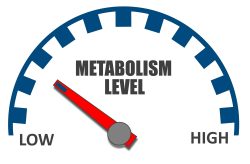Make Your Brain Quicker With 8 Weeks of Meditation
 According to a new study from Binghamton Univ., just practicing meditation studies for eight weeks can make a person’s brain quicker. People all around the globe look for mental clarity by practicing meditation inspired by and/or following the age old Buddhism practices.
According to a new study from Binghamton Univ., just practicing meditation studies for eight weeks can make a person’s brain quicker. People all around the globe look for mental clarity by practicing meditation inspired by and/or following the age old Buddhism practices.
While anecdotally, people who do meditate believe it helps recenter their thoughts, calm their minds and work through the noise to show them what matters most. However, scientifically proving the effects of practicing meditation for the human brain has shown to be somewhat tricky.
The recent study followed how practicing meditation for even just 2 months changed 10 student’s brain patterns in the Scholars Program at the University’s Thomas J. Water College of Eng. And Applied Science.
The beginnings of the research came from a chat between two Professors at the University. One is a longtime practitioner of meditation whose wife just happened to have a North American seat at the personal monastery of the Dalai Lama.
The couple developed many close friendships with some of the monks. They hung out and he even was given instruction from some of Dalai Lama’s teaching staff. He took classes, read a lot and also earned a certification of 3 years in Buddhist studies.
The other professor has studied biomedical image processing and brain mapping while working on her PhD and tracked people with Alzheimer’s Disease using MRI scans.
She was interested in research of the brain with the goal of seeing how people’s brains are functioning and also how a variety of diseases affect the brain. She has zero training in the medical field but she picked up all the background and knowledge from reading literature and speaking with experts.
The two professors had side by side offices and had a conversation on a particular day about their personal backgrounds. It was mentioned that one of the professors had been asked if he would teach a semester on meditation for the Scholar’s Program.
Meditation can have a transforming effect on the brain. It was suggested that perhaps even in a short amount of time they could possibly be able to quantify something through modern technology.
Grant funding was obtained and the collaboration began. At the beginning of the semester participants were given MRI scans of each of their brains. The students then learned just how to meditate and were told to practice 10 to 15 minutes 5 times per day and were asked to journal their practice. The class also included a syllabus with other lessons in regards to the cultural transforming and wellness application of meditation.
Binghamtom Univ. Scholars have to be high achievers who will do things they are not typically assigned to do and also do well with them. So the students do not need much prompting to practice a regular routine of meditation. In order to guarantee the reporting was objective, the students would report their experiences directly to the professor in regards to how often they practiced.
The final results showed that training in meditation showed a faster switching between the two general states of consciousness of the brain. One state is known as the default mode network that is active while the brain is not focused on the world outside but in a wakeful rest. This would be mind wandering or daydreaming states. The other state is the dorsal attention network that engages for tasks that demand attention.
The findings show that meditation will enhance the brain within and among these two states of the brain network. This indicates the effect medication has on switching fast between focusing attention and mind wandering and also when in the attentive state maintaining attention.
A term known as mental pliancy is used by the Tibetans when referring to the switching between the two brain states. The also believe the achievement of concentration is one of their fundamental self growth principles.
The two professors are still engaged in going through the data from the 2017 MRI scans so they still need to test other students of the Scholar Program. Due to the fact that autism and Alzheimer’s Disease may be due to problems with the dorsal attention network, they are in the process of making plans for continued research caused by issues with the dorsal attention network. They are in the process of putting together plans to continued research that could possibly use meditation to alleviate these problems.
They are considering an elderly population since the current study was young students. They want to gather a group of healthy older people and also another group who have mild cognitive impairment or early Alzheimer’s Disease. They want to see if meditation causes changes in the brain and can therefore enhance performance cognitively.
They are very convinced in regards to the basis of science in practicing meditation following this study, although once skeptical.
To view the original scientific study click below:
Longitudinal effects of meditation on brain resting-state functional connectivity



 It has been discovered through a recent study that people who consume 6-00 milligrams or 0.02 ounces of flavonoids each day had approximately a 20% decreased risk of cognitive decline over those who only consumed 150 milligrams or 0.005 ounces each day.
It has been discovered through a recent study that people who consume 6-00 milligrams or 0.02 ounces of flavonoids each day had approximately a 20% decreased risk of cognitive decline over those who only consumed 150 milligrams or 0.005 ounces each day. It is easy to remember the time when you could eat just about anything and not see weight gain. However, a recent study has suggested that your metabolism which is the rate your body burns calories, in reality peaks much earlier than has been thought and that its decline is later than is thought.
It is easy to remember the time when you could eat just about anything and not see weight gain. However, a recent study has suggested that your metabolism which is the rate your body burns calories, in reality peaks much earlier than has been thought and that its decline is later than is thought. A team of scientists has found that levels of Omega 3 fatty acids in blood erythrocyes are excellent indicators of mortality risk. A long-term group study was utilized for the study data, the Framingham Offspring Cohort. This cohort has been observing the residents living in the Massachusetts town since 1971. They concluded that by having higher levels of omega 3 fatty acids in their blood as a result of regularly adding oily fish to their diet, there was an increase in life expectancy by close to five years.
A team of scientists has found that levels of Omega 3 fatty acids in blood erythrocyes are excellent indicators of mortality risk. A long-term group study was utilized for the study data, the Framingham Offspring Cohort. This cohort has been observing the residents living in the Massachusetts town since 1971. They concluded that by having higher levels of omega 3 fatty acids in their blood as a result of regularly adding oily fish to their diet, there was an increase in life expectancy by close to five years. Research from the New Edith Cowan Univ. has shown that people who consume a diet high in Vitamin K have a lower risk of cardiovascular disease by up to 34%. The study was done over a 23-year time frame involving data from over 50,000 participants. The Danish Diet, Cancer and Health study examined the results from people consuming foods that are high in vitamin K.
Research from the New Edith Cowan Univ. has shown that people who consume a diet high in Vitamin K have a lower risk of cardiovascular disease by up to 34%. The study was done over a 23-year time frame involving data from over 50,000 participants. The Danish Diet, Cancer and Health study examined the results from people consuming foods that are high in vitamin K.  Research has shown that having a regular sleep pattern can help you live longer according to recent article published in Frontiers in Ageing Neuroscience. We all know sleep is necessary to maintain good physical and mental health. Sleep patterns change as we age which can affect a person’s health. The researchers wanted to find out if there was a difference in health levels according to a person’s sleep patterns compared to their age. Therefore, the study participants were divided into three age groups. The first group was aged between 20-30, another between 60-70 and the last group were older individuals between 85 and 105.
Research has shown that having a regular sleep pattern can help you live longer according to recent article published in Frontiers in Ageing Neuroscience. We all know sleep is necessary to maintain good physical and mental health. Sleep patterns change as we age which can affect a person’s health. The researchers wanted to find out if there was a difference in health levels according to a person’s sleep patterns compared to their age. Therefore, the study participants were divided into three age groups. The first group was aged between 20-30, another between 60-70 and the last group were older individuals between 85 and 105.  Cambridge and Leeds scientists have now recently reversed memory loss that is age related in mice. This discovery might lead to new treatment developments in an effort to prevent loss of memory as people age.
Cambridge and Leeds scientists have now recently reversed memory loss that is age related in mice. This discovery might lead to new treatment developments in an effort to prevent loss of memory as people age. In a study from the European Society of Cardiology, research has suggested that if a person takes 3 weeks of vacation days it may help you live longer. They looked at data from a long term study of 40 years to determine if living a healthy life could help a person’s risk of heart disease. A healthy life was determined by eating a balanced diet, not smoking, and a routine of aerobic activity. But in the recent study they looked at the data and found out that stress was the most influential indicator of longevity.
In a study from the European Society of Cardiology, research has suggested that if a person takes 3 weeks of vacation days it may help you live longer. They looked at data from a long term study of 40 years to determine if living a healthy life could help a person’s risk of heart disease. A healthy life was determined by eating a balanced diet, not smoking, and a routine of aerobic activity. But in the recent study they looked at the data and found out that stress was the most influential indicator of longevity.  A research team at UT Health San Antonio has stated that its has found the link between the Western Diet that tends to be one that is high in fats and chronic pain. The groundbreaking study has been 10 years in the making, and it could ultimately affect a variety of illnesses and may even have an impact on the opioid epidemic in this country.
A research team at UT Health San Antonio has stated that its has found the link between the Western Diet that tends to be one that is high in fats and chronic pain. The groundbreaking study has been 10 years in the making, and it could ultimately affect a variety of illnesses and may even have an impact on the opioid epidemic in this country. A recent study studied the results and issues of sleeping fewer than 6 hours for 8 nights in a row, which is the minimum amount of sleep experts agree is necessary for the ability to support optimal health in the average adult group of people. It only takes three nights in a row of sleep loss to cause physical and mental well being to deteriorate in a big way.
A recent study studied the results and issues of sleeping fewer than 6 hours for 8 nights in a row, which is the minimum amount of sleep experts agree is necessary for the ability to support optimal health in the average adult group of people. It only takes three nights in a row of sleep loss to cause physical and mental well being to deteriorate in a big way.